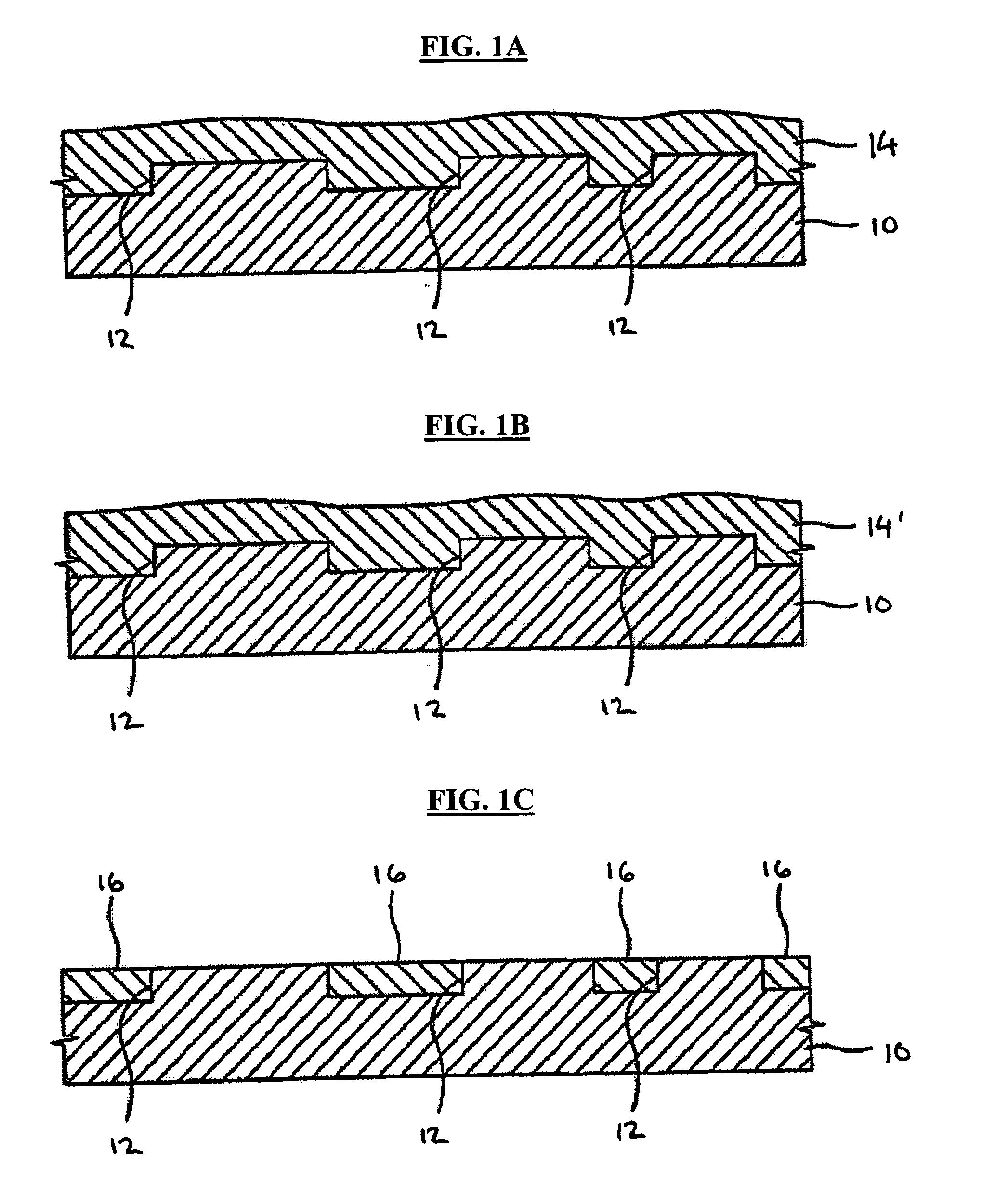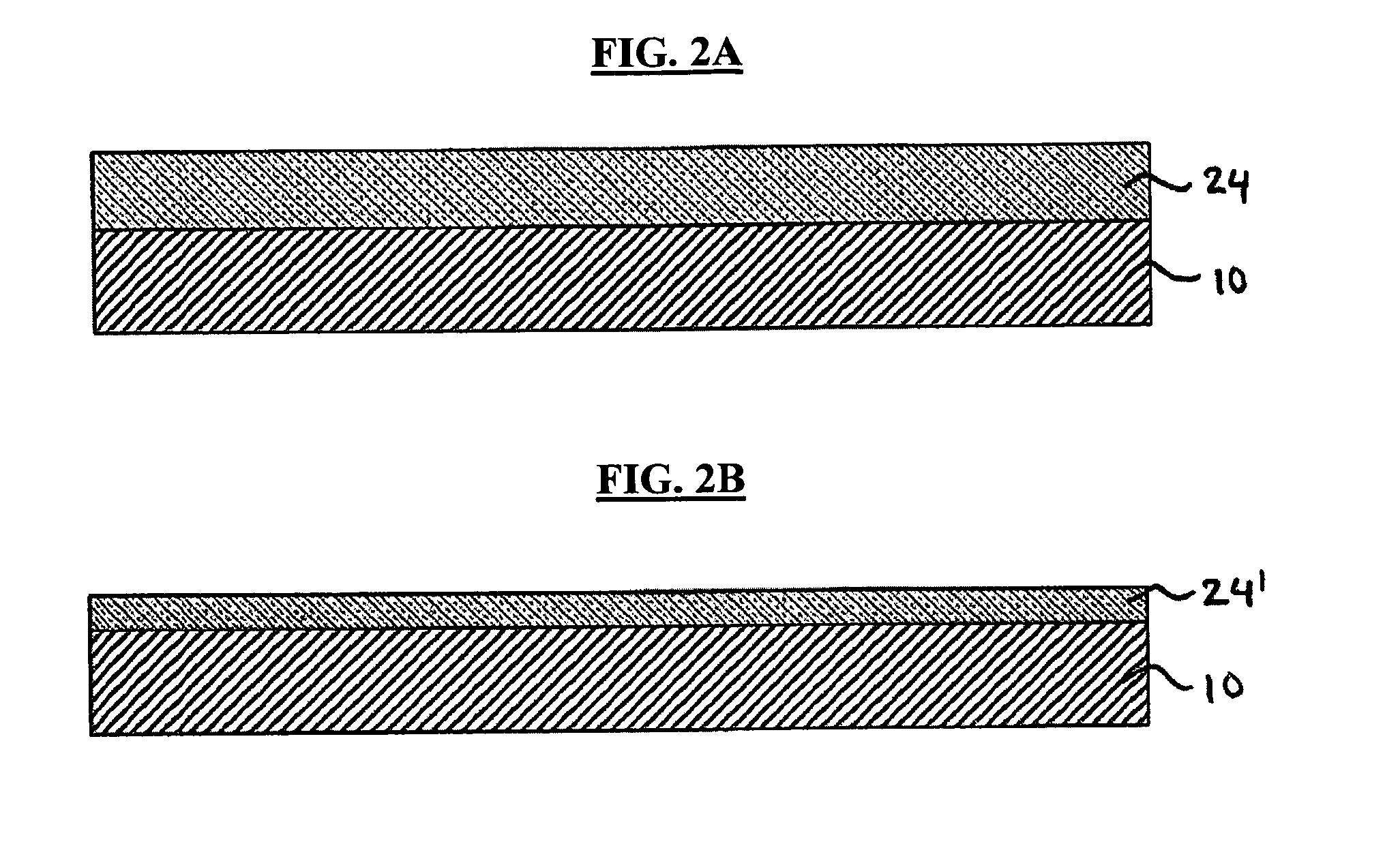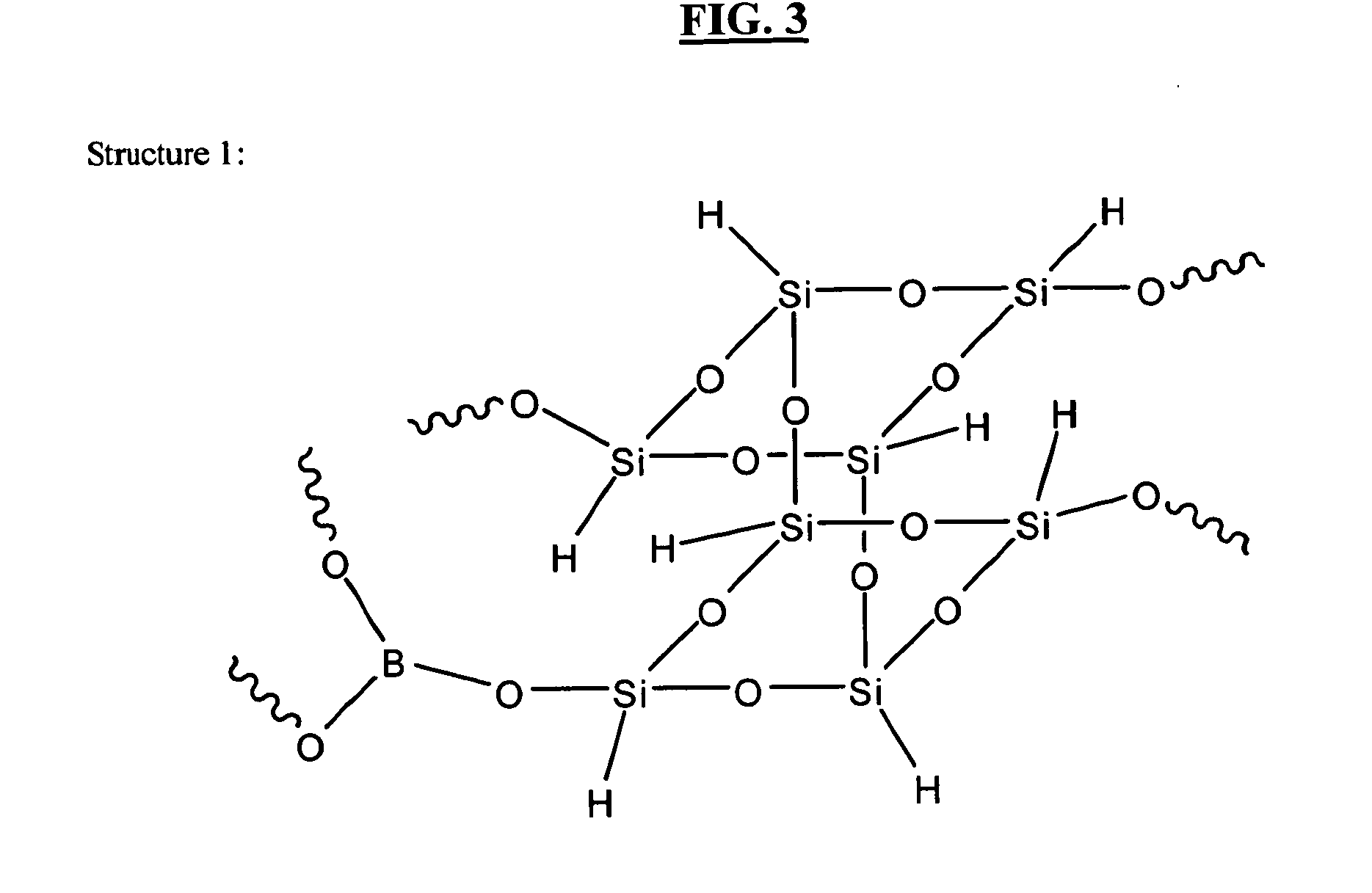Boron-containing hydrogen silsesquioxane polymer, integrated circuit device formed using the same, and associated methods
- Summary
- Abstract
- Description
- Claims
- Application Information
AI Technical Summary
Benefits of technology
Problems solved by technology
Method used
Image
Examples
example 1
Synthesis of (BO3 / 2)0.01(HSiO3 / 2)0.99
[0054]In a first example preparation, a boron-containing hydrogen silsesquioxane polymer according to an embodiment was prepared as follows. In a 3.0 L jacketed reactor, toluene (180 g), sulfuric acid (92-96%; 75.0 g), and a phase transfer catalyst (1.0 g) were combined and the resulting mixture was stirred for 30 min at room temperature under a nitrogen atmosphere. Then, a mixture of trichlorosilane (60 g, 443 mmoles), boron trichloride (3.8 g of a 1.0 molar (M) solution in toluene; 4.3 mmoles), and toluene (180.0 g) was added dropwise to the mixture in the jacketed reactor. The duration of the dropwise addition was 5 hours. The temperature was kept below 40° C. during the dropwise addition. Once the addition was completed, the mixture was stirred for another hour. The stirring was then stopped and the lower phase was separated from the upper phase. The lower phase was discarded. The upper phase (toluene phase) was washed with water (five wash...
example 2
Synthesis of (BO3 / 2)0.0175(HSiO3 / 2)0.9825
[0055]In a second example preparation, a boron-containing hydrogen silsesquioxane polymer according to an embodiment was prepared as follows. In a 3.0 L jacketed reactor, toluene (540.0 g), sulfuric acid (92-96%; 225.0 g), and a phase transfer catalyst (1.0 g) were combined and the resulting mixture was stirred for 30 min at room temperature under a nitrogen atmosphere. Then, a mixture of trichlorosilane (171.0 g, 1.26 moles), boron trichloride (20.4 g of a 1.0 M solution in toluene; 22.5 mmoles), and toluene (540.0 g) was added dropwise to the mixture in the jacketed reactor. The duration of the dropwise addition was 5 hours. The temperature was kept below 40° C. during the dropwise addition. Once the addition was completed, the mixture was stirred for another hour. The stirring was then stopped and the lower phase was separated from the upper phase. The lower phase was discarded. The upper phase (toluene phase) was washed with water (five...
example 3
Synthesis of (BO3 / 2)0.02(HSiO3 / 2)0.98
[0056]In a third example preparation, a boron-containing hydrogen silsesquioxane polymer according to an embodiment was prepared as follows. In a 3.0 L jacketed reactor, toluene (180 g), sulfuric acid (92-96%; 75.0 g), and a phase transfer catalyst (1.0 g) were combined and the resulting mixture was stirred for 30 min at room temperature under a nitrogen atmosphere. Then, a mixture of trichlorosilane (60 g, 443 mmoles), boron trichloride (7.7 g of a 1.0 molar (M) solution in toluene; 8.4 mmoles), and toluene (180.0 g) was added dropwise to the mixture in the jacketed reactor. The duration of the dropwise addition was 5 hours. The temperature was kept below 40° C. during the dropwise addition. Once the addition was completed, the mixture was stirred for another hour. The stirring was then stopped and the lower phase was separated from the upper phase. The lower phase was discarded. The upper phase (toluene phase) was washed with water (five wash...
PUM
| Property | Measurement | Unit |
|---|---|---|
| Temperature | aaaaa | aaaaa |
| Temperature | aaaaa | aaaaa |
| Temperature | aaaaa | aaaaa |
Abstract
Description
Claims
Application Information
 Login to View More
Login to View More - R&D
- Intellectual Property
- Life Sciences
- Materials
- Tech Scout
- Unparalleled Data Quality
- Higher Quality Content
- 60% Fewer Hallucinations
Browse by: Latest US Patents, China's latest patents, Technical Efficacy Thesaurus, Application Domain, Technology Topic, Popular Technical Reports.
© 2025 PatSnap. All rights reserved.Legal|Privacy policy|Modern Slavery Act Transparency Statement|Sitemap|About US| Contact US: help@patsnap.com



